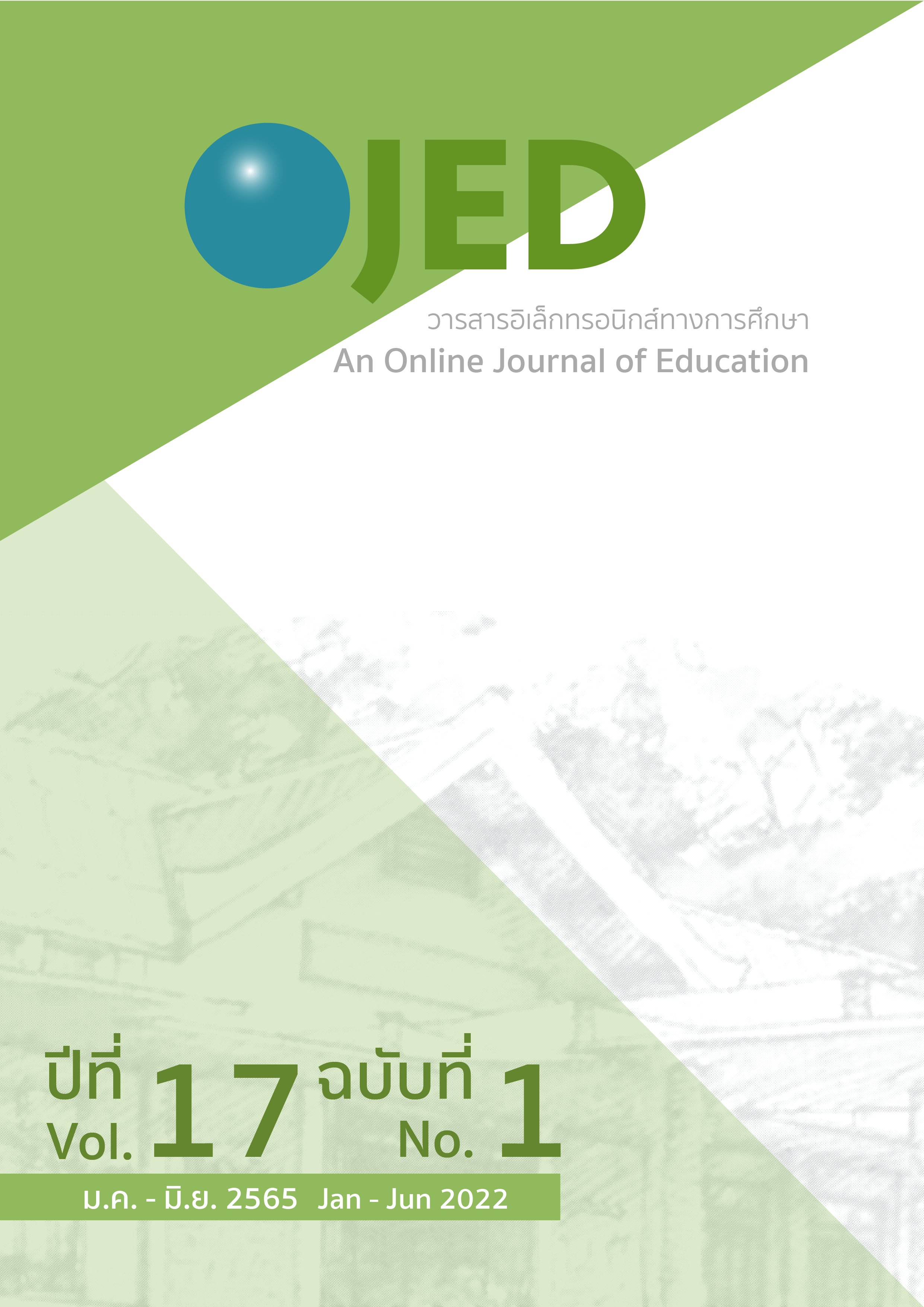The Effects of Teaching Reading Remedial Course Using the Five Pillars of Reading Instruction on English Reading Ability of Lower Secondary Students
DOI:
https://doi.org/10.14456/ojed.2022.27Keywords:
English reading, reading remedial, reading abilityAbstract
The objectives of this study were 1) to investigate the effect of an English reading remedial course using The Five Pillars of Reading Instruction on English reading ability of low-achieving students and 2) to examine the opinions of students about English reading remedial course using The Five Pillars of Reading Instruction. The participants were 10 lower secondary students (Grade 8) at Wattana Wittaya Academy who had Grade 7 reading subject’s grade lower than 2.5 and volunteered to participate. The remedial course was composed of five elements according to the Five Pillars of Reading Instruction suggested in Shanahan (2005) which were Phonological Awareness, Phonics, Oral Reading Fluency, Vocabulary, and Reading Comprehension. The treatment lasted 80 hours. The instruments were lesson plans, a reading diagnostic test and a semi-structured interview. The results from the pretest and posttest were analyzed by using Wilcoxon Signed Ranks test and descriptive statistics to compare students’ reading ability. In addition, the participants’ opinions were analyzed by using content analysis. The result of this study found 1) the participants who attended the remedial course had statistically significant impact in all 5 areas. The overall was Z= -2.812 p= .005 and 2) the participants were satisfied towards the remedial course and suggested to have least than 3 hours instruction during academic year for low-achieving readers. The finding can be applied to the normal reading classroom and remedial course.
References
Alderson, D. C. & Urquhart, H. (1984). Reading in Foreign Language. Longman Press.
Grabe, W. & Stoller, L. F. (2002). Teaching and Research Reading. Pearson Education.
Sriprasit, I. (2009). New Research-based Literary Framework in ELT in Thailand by Intergrating the Phonics Approach (Bottom-up) with the whole Language Approach (Top-down) in Teaching Thais to Read and Write English as well as to overcome Dylexia. https://citeseerx.ist.psu.edu/viewdoc/download?doi=10.1.1.489.4774&rep=rep1&type=pdf
National Reading Panel. (2000). Teaching Children To Read: An Evidence-Based Assessment of the Scientific Research Literature on Reading and Its Implications of Reading Instruction. http://www.nichd.nih.gov/publications/pubs/nrp/documents/report.pdf
Pearson Education. (2014). Woodcock Reading Mastery Tests (3rd ed.). http://www.pearsonclinical.com/education/products/100000264/woodcock-reading-mastery-tests-third-edition-wrmt-iii.html#tab-resources
Sangthongjhin, W. (1986). A Level of English Reading Ability of Student at the Lower Secondary Education Level. Chulalongkorn University.
Shanahan, T. (2005). The National Reading Panel Report: Practical Advice for Teachers. Learning Point Associates.
Wichadee, S. (2005). The Effects of Cooperative Learning on English Reading Skills and Attitudes of the First-Year Students at Bangkok University. http://www.bu.ac.th/knowledgecenter/epaper/july_dec2005/saovapa.pdf.
Wisaijorn, P. (2003). Teaching Reading Comprehension to Thai EFL Students: Reciprocal Teaching Procedure in Small Group Work. [Unpublished doctoral dissertation], University of Canberra.
Downloads
Published
How to Cite
Issue
Section
License
Copyright (c) 2022 An Online Journal of Education

This work is licensed under a Creative Commons Attribution-NonCommercial-NoDerivatives 4.0 International License.




